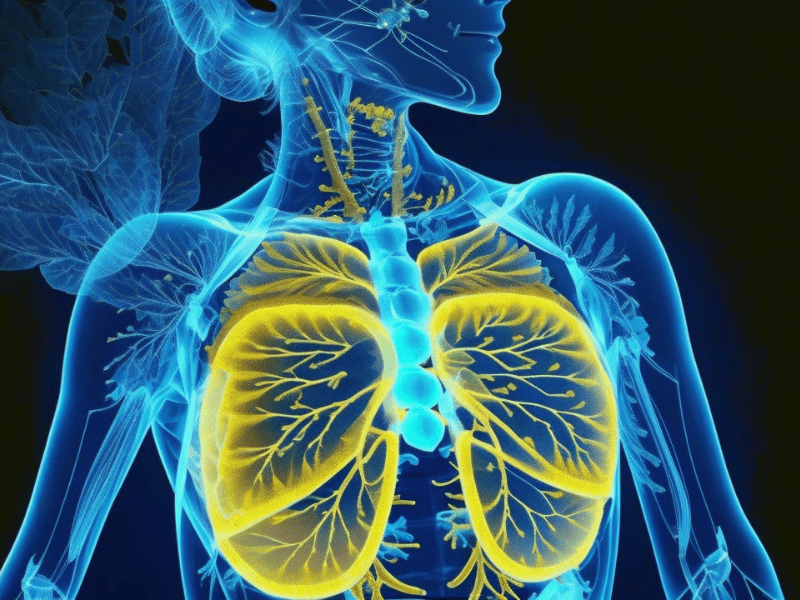I. Introduction
Breath, as the Vietnamese Zen master Thich Nhat Hanh eloquently stated, "is the bridge which connects life to consciousness, which unites your body to your thoughts." In the realm of athletics, where physical prowess and mental agility are inextricably linked, the importance of breath cannot be overstated. This article delves into the often-overlooked technique of Huff Breathing, a practice that promises to revolutionize athletic performance.
II. What is Huff Breathing?
Definition and Origin
Huff Breathing is a specialized form of breathwork that focuses on controlled exhalation. Unlike traditional deep breathing, which emphasizes inhalation, Huff Breathing aims to optimize the expulsion of air from the lungs. This technique is particularly beneficial for athletes, as it aids in the efficient removal of carbon dioxide, a byproduct of intense physical activity.
How It Differs from Other Breathing Techniques
While there are myriad breathing techniques available, ranging from diaphragmatic to core breathing exercises, Huff Breathing stands apart in its focus on exhalation. Most techniques prioritize inhalation, often neglecting the equally crucial process of exhaling. Huff Breathing fills this gap, offering a more balanced approach to breathwork.
III. The Science Behind Huff Breathing
Physiological Benefits
The physiological benefits of Huff Breathing are manifold. Firstly, it aids in the efficient removal of carbon dioxide, thereby reducing the risk of hypercapnia, a condition characterized by elevated levels of CO2 in the blood. Secondly, it enhances oxygen uptake, allowing athletes to perform at peak levels for extended periods.
Studies Supporting Its Effectiveness
While there is a dearth of studies specifically focused on Huff Breathing, research on breathwork in athletes is abundant. For instance, a study published in the National Center for Biotechnology Information suggests that breathing exercises can improve tidal volume and reduce respiratory rate. Another study on the Wim Hof Method indicates performance benefits associated with specialized breath training.
IV. Why Athletes Shouldn't Ignore Huff Breathing
Performance Enhancement
The most compelling reason for athletes to incorporate Huff Breathing into their regimen is the promise of enhanced performance. By optimizing the respiratory process, athletes can push their physical limits, breaking through barriers that may have previously seemed insurmountable.
Stress Reduction
As William James, the American philosopher, aptly put it, "The greatest weapon against stress is our ability to choose one thought over another." Huff Breathing not only enhances physical performance but also serves as a potent tool for stress reduction. By focusing on the breath, athletes can enter a state of flow, allowing them to perform at their best without the hindrance of stress or anxiety.
Relevance to Core Breathing
Huff Breathing complements other forms of breathwork, such as core breathing exercises, which are integral to athletic performance. By integrating Huff Breathing with other techniques, athletes can achieve a holistic approach to breathwork, thereby maximizing their physical capabilities.
In this first part of the article, we've laid the groundwork for understanding Huff Breathing, its unique features, and its scientific underpinnings. As we proceed, we'll delve deeper into how to perform this technique, its applicability across various sports, and real-life case studies that underscore its efficacy. Stay tuned for an exhaustive exploration of this game-changing technique.
V. How to Perform Huff Breathing
Step-by-Step Guide
Mastering Huff Breathing requires a nuanced understanding of its mechanics. Here's a step-by-step guide based on information from Intermountain Healthcare:
- Positioning: Sit up straight with your chin tilted slightly upward.
- Inhalation: Take a deep breath through your nose, filling your lungs about three-quarters full.
- Hold: Hold your breath for two to three seconds.
- Exhalation: Perform three low-level huffs, expelling the air forcefully but controlled.
Common Mistakes to Avoid
- Shallow Breathing: Failing to fill your lungs adequately will not yield the desired results.
- Rapid Exhalation: Huffing too quickly can lead to hyperventilation.
VI. Huff Breathing in Different Sports
Martial Arts
In martial arts, breath control is paramount. Huff Breathing can be particularly beneficial during high-intensity sparring sessions. For more on this, explore our article on Breathing Techniques for Martial Arts.
Swimming
Swimmers often struggle with breath control, especially during long-distance events. Incorporating Huff Breathing can be a game-changer, as discussed in our article on Bilateral Breathing: Game Changer for Swimmers.
VII. Case Studies
Wim Hof Method and Breathing Economy
While there are no specific case studies on Huff Breathing, it's worth noting that specialized breathing techniques have been studied for their impact on athletic performance. For instance, a study on the Wim Hof Method showed that a 4-week application improved breathing economy during exercise. This suggests that Huff Breathing, which also focuses on controlled breathing, could offer similar benefits.
The Role of Breathing in Athletic Success
Another study titled "Mastering the Breath: A Guide to the Invisible Key to Athletic Success" discusses significant improvements in diaphragm thickness, oxygen saturation, and exercise tolerance through specialized breathing techniques. This further supports the potential efficacy of Huff Breathing in enhancing athletic performance.
VIII. Frequently Asked Questions
What is Huff Breathing?
Huff Breathing is a specialized form of breathwork that focuses on controlled exhalation. It is particularly beneficial for athletes as it helps in enhancing performance and reducing stress.
How Does Huff Breathing Work?
Huff Breathing works by employing a specific pattern of inhalation and exhalation. The technique involves taking a deep breath and then exhaling forcefully in a controlled manner. This helps in optimizing the oxygen-carbon dioxide exchange in the lungs.
Is Huff Breathing Similar to Coughing?
No, Huff Breathing is not as forceful as a cough but can be more effective and less tiring. It is like exhaling onto a mirror to steam it up, as described by the Cystic Fibrosis Foundation.
What Are the Benefits of Huff Breathing for Athletes?
Huff Breathing offers multiple benefits for athletes, including improved lung capacity, enhanced focus, better stamina, and reduced stress levels. It is a versatile technique that can be incorporated into various sports training regimens.
Are There Any Risks Associated with Huff Breathing?
While generally safe, Huff Breathing can cause dizziness or light-headedness in some individuals. Always consult a healthcare provider if you experience adverse effects.
People Also Ask: "How Often Should One Practice Huff Breathing?"
Consistency is key. Daily practice is recommended for optimal results. This aligns with information from Physiopedia which suggests that regular practice of specialized breathing techniques can yield significant benefits.
IX. Myths and Misconceptions
Debunking Common Myths
While there are no myths specifically targeting Huff Breathing, misconceptions about breathwork in general abound. For instance, the notion that "you have to always take big breaths" is debunked by Huff Breathing, which emphasizes controlled exhalation. This myth is also discussed in an article by The Babel Flute.
The Role of the Diaphragm
Another misconception is that the diaphragm's sole purpose is for support. In reality, the diaphragm plays a multifaceted role in breathing, including in the Huff Breathing technique. Understanding its actual role can significantly improve your breathwork practice.
"The greatest weapon against stress is our ability to choose one thought over another." - William James
This quote underscores the importance of mental clarity in breathwork. Myths often arise from misunderstandings, and dispelling them requires both factual information and a clear mindset.
X. Conclusion
Summarize the Key Takeaways
Huff Breathing is a specialized form of breathwork that focuses on controlled exhalation. It offers numerous benefits, including enhanced athletic performance and stress reduction. Its unique approach complements other breathing techniques, making it a versatile addition to any athlete's training regimen.
By the way, you can join our Pathfinders Community To Rediscover Your AUTHENTIC SELF and Begin Living by YOUR DESIGN and not by DEFAULT.
Experience The Power Of Taking Back Control Of Your Life
Claim Your Free Value From Tim Wagner
Experience Stress Relief

Previous Live Breathwork Journeys - Instant Stress Relief
Unlock Your Potential

Previous Personal Development Workshops
Enhance Your Wellbeing




